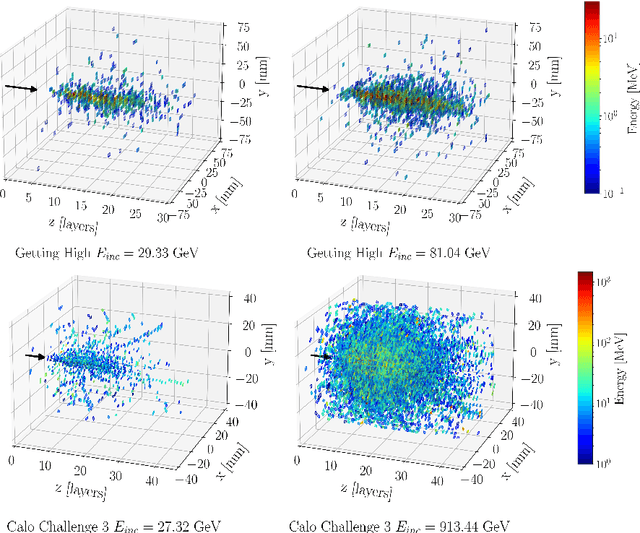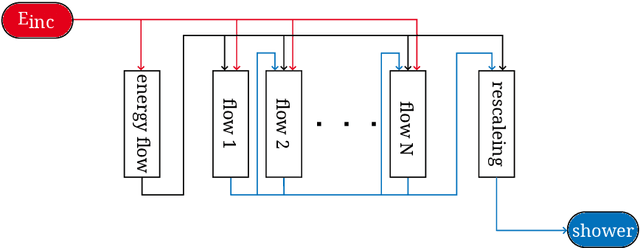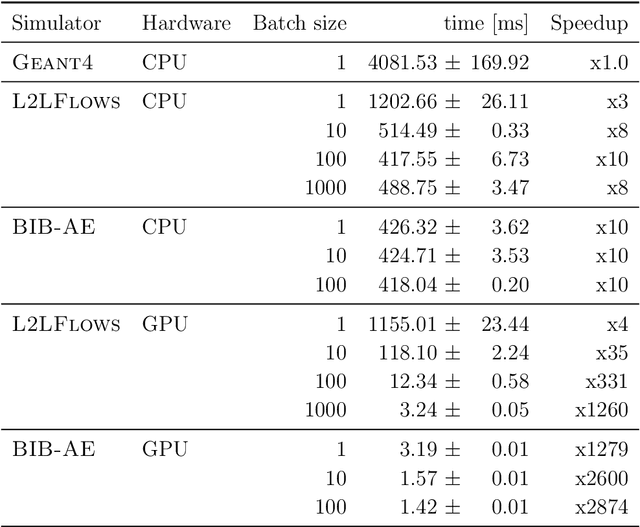Convolutional L2LFlows: Generating Accurate Showers in Highly Granular Calorimeters Using Convolutional Normalizing Flows
Paper and Code
Jun 03, 2024



In the quest to build generative surrogate models as computationally efficient alternatives to rule-based simulations, the quality of the generated samples remains a crucial frontier. So far, normalizing flows have been among the models with the best fidelity. However, as the latent space in such models is required to have the same dimensionality as the data space, scaling up normalizing flows to high dimensional datasets is not straightforward. The prior L2LFlows approach successfully used a series of separate normalizing flows and sequence of conditioning steps to circumvent this problem. In this work, we extend L2LFlows to simulate showers with a 9-times larger profile in the lateral direction. To achieve this, we introduce convolutional layers and U-Net-type connections, move from masked autoregressive flows to coupling layers, and demonstrate the successful modelling of showers in the ILD Electromagnetic Calorimeter as well as Dataset 3 from the public CaloChallenge dataset.
 Add to Chrome
Add to Chrome Add to Firefox
Add to Firefox Add to Edge
Add to Edge